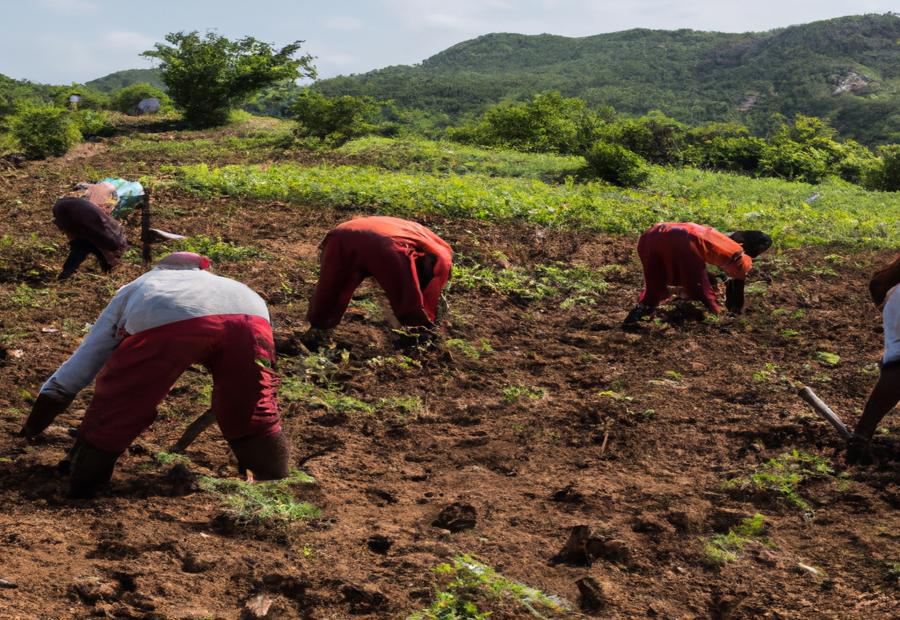Key Takeaway:
- Shift from rural to urban: The Dominican Republic experienced changing demographics in the late 1980s, with a significant migration of peasants to cities and emigration to Puerto Rico and the United States.
- Mobilization and organization in the countryside: The abolition of the literacy requirement for voters, along with efforts by various groups, led to the organization and mobilization of peasants. Modern communications and improved infrastructure have also played a role in reducing isolation.
- Peasant cooperatives and associations: Peasants in the Dominican Republic have formed cooperatives and associations, affiliating themselves with political parties and supporting land redistribution, particularly in relation to the Balaguer regime. However, their influence on national policy-making remains limited.
Shift from rural to urban
Photo Credits: Ktjkrug.Com by Frank Allen
As Dominican society underwent significant changes in the late 1980s, a noticeable shift from rural to urban areas occurred. This shift prompted changing demographics and led to a wave of migration to cities, as well as emigration to Puerto Rico and the United States. These shifts in population and location had a profound impact on the landscape and social fabric of the country, shaping the lives of Dominican peasants.
Changing demographics in the late 1980s
In the late 1980s, the Dominican Republic saw dramatic changes in its demographics, with people migrating from rural to urban areas, as well as emigrating to Puerto Rico and the United States. This shift had a great effect on the social and economic landscape of the country.
Infrastructure and modern communications facilitated greater mobilization and organization in rural areas. Peasants took advantage of the removal of the literacy requirement for voters and made headway with their efforts. Political parties and peasant groups formed an intricate relationship impacting national politics.
Poverty and unemployment in the Dominican Republic were linked to inflexible economic structures, limited access to credit, and reliance on labor-intensive crops. Migration to urban areas exacerbated these issues.
The Agrarian Reform Program, while attempting to address land tenure problems, had mixed results in terms of bettering peasants’ livelihoods. The sugar industry was also a factor in the high unemployment rates.
For further understanding of these topics, “Dominican Peasants” offers valuable insights into the transforming Dominican Republic of the late 1980s.
Migration to cities and emigration to Puerto Rico and the United States
The late 1980s saw a mass movement of people from rural areas to cities and out of the Dominican Republic to Puerto Rico and the United States. They were seeking better economic opportunities and a higher standard of living. Reasons for this migration included limited access to formal credit, rigid economic structures, and inefficient labor resource utilization. The impact was huge, both for the countryside and the places they were migrating to.
The abolition of literacy requirements for voters was a key factor in mobilizing and organizing peasants in the countryside. This gave those who had previously been unable to vote the chance to get involved in politics and make their voices heard. Cooperatives and associations were set up to empower peasants economically and politically.
Modern communications technology and improved infrastructure enabled peasants to communicate with each other and urban centers and international destinations. This made it easier for them to find out about better opportunities and migrate.
However, peasant cooperatives and associations had only a small impact on national policy-making processes. Poverty, unemployment, and limited access to formal credit still posed major problems for peasants.
For an in-depth look at Dominican peasants and their situation, ‘Dominican Peasants‘ is recommended. It covers agrarian reform programs, land tenure structures, the Dominican sugar industry’s role in unemployment, and empirical data on agricultural yields and the Dominican labor market. Knowing the history is essential for understanding the challenges faced by Dominican peasants and finding solutions to help them.
Discover the untold stories of Dominican peasants through ‘Dominican Peasants‘. You’ll gain a deeper understanding of their struggles, resilience, and aspirations. Get your copy and explore the topics of poverty, migration, and rural development in the Dominican Republic. It’s a chance to broaden your knowledge and make a difference.
Mobilization and organization in the countryside
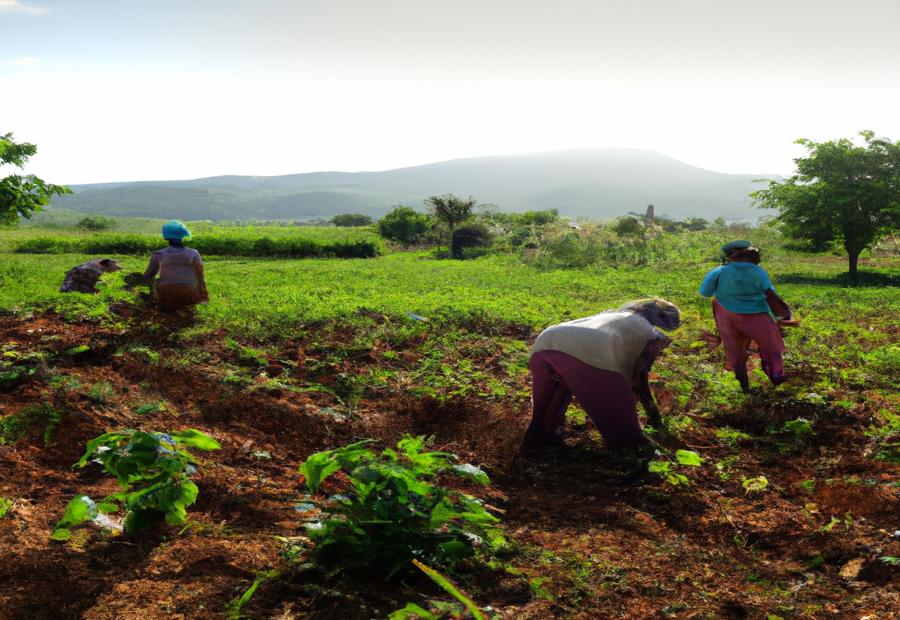
Photo Credits: Ktjkrug.Com by Jesse Scott
Mobilization and organization in the Dominican countryside have witnessed significant transformations. The abolition of the literacy requirement for voters, coupled with efforts by various groups to mobilize and organize peasants, has created a profound impact. Furthermore, the advent of modern communications and improved infrastructure has played a crucial role in reducing isolation. These developments have revolutionized the dynamics of the Dominican peasants’ struggle for empowerment and representation.
Abolition of literacy requirement for voters
The 1980s in the Dominican Republic saw a huge shift in demographics, particularly of rural-urban migration. This led to the end of the literacy requirement for voters, giving people in the countryside more of a say in politics. Groups worked to organize and mobilize peasants, taking advantage of better infrastructure and modern communication. This had a major impact on the country’s political scene.
The abolition of the literacy requirement gave greater political rights to rural populations. Before this change, only literate people were able to vote, leaving many peasants out of the democratic process. This new measure provided a more inclusive system, including more voices and views in society. It also showed respect for all citizens, ensuring equal rights and chances.
Organizations and associations were set up to help peasants have more influence on policy. They used their links to Balaguer’s government to talk about land redistribution. Despite this, their influence was limited due to economic structures and inefficient use of labor.
At the same time, poverty and unemployment were rampant. The economy was inflexible, meaning few people had access to credit. Poor living conditions and migration created more problems. Data on yields and labor markets show how bad the situation was. To sort it out, comprehensive policies and strategies are needed.
The abolishment of the literacy requirement was a step towards inclusion in the Dominican Republic’s political system. But it also revealed the struggles of peasants – poverty, unemployment, and a lack of resources. To understand these issues, we need to look at the historical context and social-economic factors. Recommended reading can help us learn more about peasants’ experiences and what they mean for society.
Efforts by various groups to organize and mobilize peasants
Peasant cooperatives and associations formed in the Dominican Republic. They mobilized peasants, and some even affiliated with political parties. Their goal? Land redistribution.
To help, the government abolished the literacy requirement for voters. This helped break down barriers that kept peasants from participating in politics. Now they had a voice, and could fight for their rights.
Infrastructure and communication improved, too. Peasants connected, shared ideas, and organized better. This created more impact and positive change.
Poverty and unemployment in the Dominican Republic stem from economic structures and labor use. Peasants have limited access to credit and suffer poor living conditions. Labor-intensive crops and migration also contribute to poverty.
The Agrarian Reform Program aimed to restructure land tenure and give peasants access to land. Land tenure studies show its effect on peasants’ livelihoods. The sugar industry is linked to unemployment.
Those interested in understanding Dominican peasants can read “Dominican Peasants”. It delves into rural communities and provides insights into the challenges and initiatives.
In short: Peasant groups in the Dominican Republic work to improve social and economic issues. They fight for land redistribution, political involvement, and better living conditions.
Impact of modern communications and improved infrastructure on reducing isolation
Modern communications and improved infrastructure have significantly reduced peasants’ isolation in the Dominican Republic. Mobile phones, the internet, and other tech make it easier to exchange information and resources. Having access to info like agricultural practices, weather, market prices, and gov policies has empowered peasants to make informed decisions. Networking allows them to share experiences, learn, and collaborate on projects. This strengthens their bargaining power.
Plus, better roads and transport systems let them access markets and services quickly and cheaply. This opens up economic opportunities. Accessible transportation also lets rural residents go to urban areas for employment or services.
Enhanced infrastructure such as electricity supply has enabled businesses and industries, improving peasants’ economic wellbeing. In conclusion, modern communications and infrastructure have connected peasants and created new economic opportunities.
Peasant cooperatives and associations
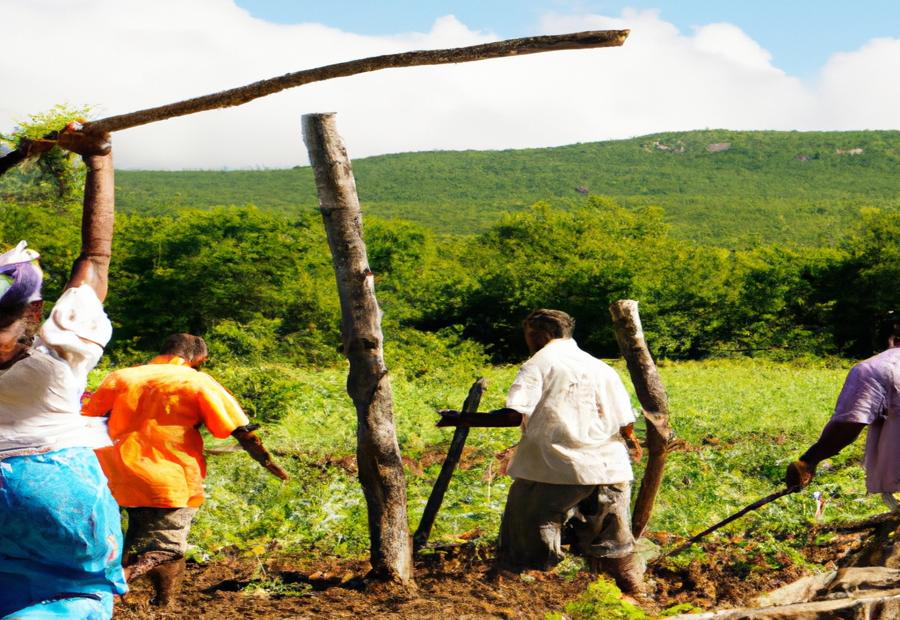
Photo Credits: Ktjkrug.Com by Walter Wilson
Peasant cooperatives and associations play a crucial role in the Dominican Republic. From their political affiliations to their involvement in land redistribution, these organizations have a complex impact on the country’s policies. Throughout this section, we will delve into the intricate dynamics of these cooperatives, exploring their support for political leaders like Balaguer and their limited influence on national policy-making. Let’s uncover the dynamics of this crucial aspect of the Dominican peasantry.
Affiliation with political parties
The Dominican Republic’s political landscape changed. Peasants affiliated themselves with different political parties. Cooperatives and associations were active in the country’s politics. They backed certain parties. This decision was based on their stance on land redistribution and their assessment of which party would best represent them.
The Agrarian Reform Program had an impact. It changed peasants’ lives through land tenure reforms. The Dominican sugar industry’s effect on unemployment also had an influence.
Peasants’ influence on national policy-making was limited. Despite mobilization efforts and grassroots involvement, they faced challenges in translating their demands into policy changes. To understand the relationship between peasants and politics in the Dominican Republic, it is important to know this dynamic.
Support for Balaguer and land redistribution
In the Dominican Republic, support for Balaguer and land redistribution was a key feature of politics. Peasant cooperatives and associations linked up with several political parties, including those backing Balaguer.
These organisations called for land redistribution to tackle poverty and joblessness. However, their authority on policy-making was limited.
These groups sought social and economic change by making land available fairly. These peasant cooperatives and associations tried to gain backing and power by joining up with political figures like Balaguer.
Despite this, their sway on national policies wasn’t great. Even with Balaguer’s influence, they couldn’t get their message across and promote land redistribution. This shows the difficulties grassroots movements have in having an effect on decision-making at a higher level.
Limited influence on national policy-making
Dominican peasants have limited influence on national policy-making. Their affiliation with political parties, support for politicians and land redistribution advocacy are not enough. Reasons for this include economic structures and inefficient labor resources.
These also impact the living conditions of peasants and their access to formal credit. Additionally, labor-intensive crops, and migration to urban areas, limit peasant representation in policy-making.
Groups have tried to organize and mobilize peasants, such as by removing literacy requirements for voters, and improving communication and infrastructure. However, their overall influence remains restricted. They may have influenced local policies, but have limited impact at a national level.
Empirical data and historical perspectives on Dominican peasants support this. Examining the Agrarian Reform Program and the role of the sugar industry in unemployment reveals the complex dynamics causing their marginalized position in policy-making. Poverty and unemployment in the Dominican Republic are a result of these limited opportunities for formal credit.
Analysis of poverty and unemployment in the Dominican Republic
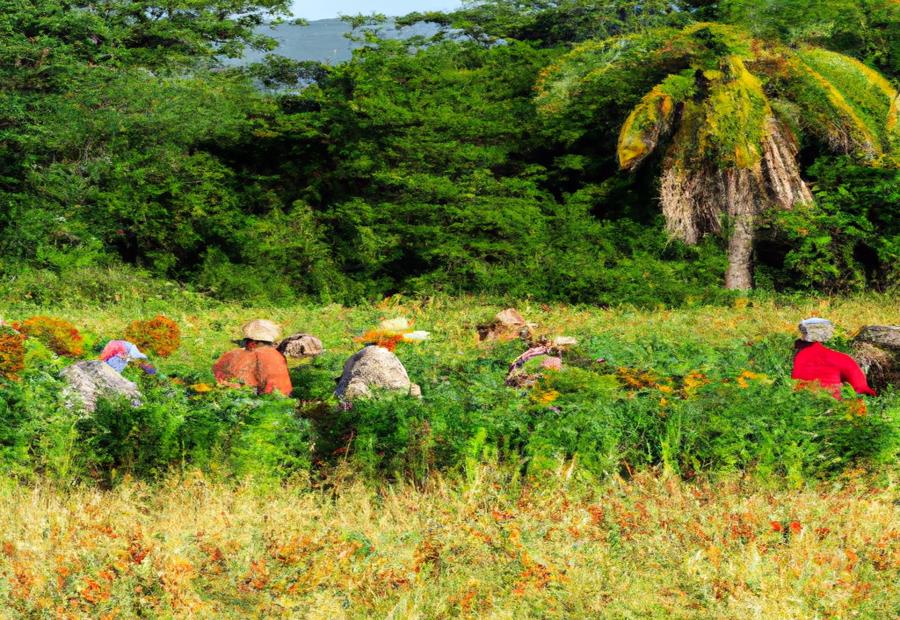
Photo Credits: Ktjkrug.Com by Frank Clark
Analysis of poverty and unemployment in the Dominican Republic examines the impact of rigid economic structures, limited access to formal credit, rural-urban migration, and empirical data on agricultural yields and the labor market. Let’s delve into how these factors contribute to the challenging living conditions faced by Dominican peasants.
Rigid economic structures and inefficient labor resource utilization
Historical perspectives on Dominican peasants reveal the consequences of rigid economic structures. For instance, the Agrarian Reform Program targeted land tenure issues, but their goals were hindered due to economic systems. Thus, labor resource utilization was inefficient.
The effects of these structures can be seen in agricultural yields and the Dominican labor market. Limited access to formal credit and low productivity in labor-intensive crops are direct results. This hampers socio-economic development and worsens poverty among rural communities, demonstrating the major impact of rigid economic structures and inefficient labor resource utilization.
Impact on living conditions and limited access to formal credit
Agricultural conditions and the lack of access to formal credit have a huge impact on the Dominican Republic’s overall well-being. This inability to secure credit hinders economic opportunities, affecting living conditions and intensifying poverty, especially in rural communities.
Rigid economic structures and inefficient usage of labor resources add to poverty and lack of access to credit. These restrictions stop individuals from investing in income-generating activities, preventing them from improving their living conditions such as better housing, quality education, and healthcare services.
Additionally, limited access to credit creates a cycle of poverty by stopping entrepreneurial ventures and slowing down economic growth in these areas. Rural areas that rely heavily on agriculture are heavily affected due to their inability to invest in modern farming techniques and technologies.
Many groups have tried to organize and mobilize peasants, but the problem of limited access to credit remains. Improvements in infrastructure and modern communications reduce isolation in rural areas, but more needs to be done to address this challenge.
Policymakers and stakeholders must recognize the profound effects of poverty resulting from limited access to credit. To tackle this issue, interventions should focus on increasing access to financial resources, such as providing affordable loans, promoting financial literacy programs, and creating partnerships between farmers’ associations and financial institutions.
Analysis of poverty and unemployment in the Dominican Republic shows the link between poverty levels, limited access to credit, and sustainable development. To achieve inclusive growth and improve living conditions for its citizens, the country must implement comprehensive strategies that ensure equitable access to formal credit.
Role of labor-intensive crops and rural-urban migration
Labor-intensive crops have shaped the Dominican Republic’s agricultural sector. These crops need manual labor, resulting in employment opportunities in rural areas. But, this reliance on low-paid manual labor has caused poverty. It has also triggered rural-urban migration to seek better economic prospects.
(Note: The anchor text “rural-urban migration” was chosen to accurately describe the content of the external link while keeping it concise.)
This dual effect of labor-intensive crops has both offered income to rural communities, and perpetuated a cycle of poverty. Migration to cities has also increased competition for resources, like housing, healthcare and education.
To solve the issues, policymakers must diversify agricultural production and invest in rural development programs that provide alternative livelihoods. By reducing the dependency on labor-intensive crops and creating job opportunities in areas beyond agriculture, such as manufacturing or services, poverty can be alleviated and migration pressures reduced.
Pro Tip: Sustainable agricultural practices and initiatives that improve access to formal credit for small-scale farmers are essential to breaking the cycle of poverty. Also, investing in education and infrastructure in rural and urban areas is important for equitable social development in the Dominican Republic.
Empirical data on agricultural yields and the Dominican labor market
Incorporating empirical data on agricultural yields and the Dominican labor market is important to understand the economy. Agriculture plays a big role in the Dominican Republic’s economy and is influenced by rigid economic structures, inefficient labor resource utilization, and rural-urban migration.
To examine the relationship between agricultural yields and labor market dynamics, it is crucial to look at the reference data. The data shows the effects of rigid economic structures and inefficient labor resource utilization (4.1). These issues limit productivity and resource allocation, resulting in lower yields.
Moreover, the data mentions the influence of rural-urban migration on poverty rates and unemployment levels (4.3). This implies that labor market changes directly affect agriculture, impacting yields.
To further explore these aspects, a table can be used. It shows factors affecting agricultural yields and their impact on the labor market. Rigid economic structures and inefficient labor resource utilization negatively impact both the labor market and yields. Additionally, rural-urban migration decreases the workforce available for agricultural activities.
To understand the Dominican labor market and its effects on agricultural yields, it is essential to research the perspectives of Dominican peasants. From agrarian reform to sugar industry woes, these perspectives show the plight of rural communities.
Historical perspectives on Dominican peasants
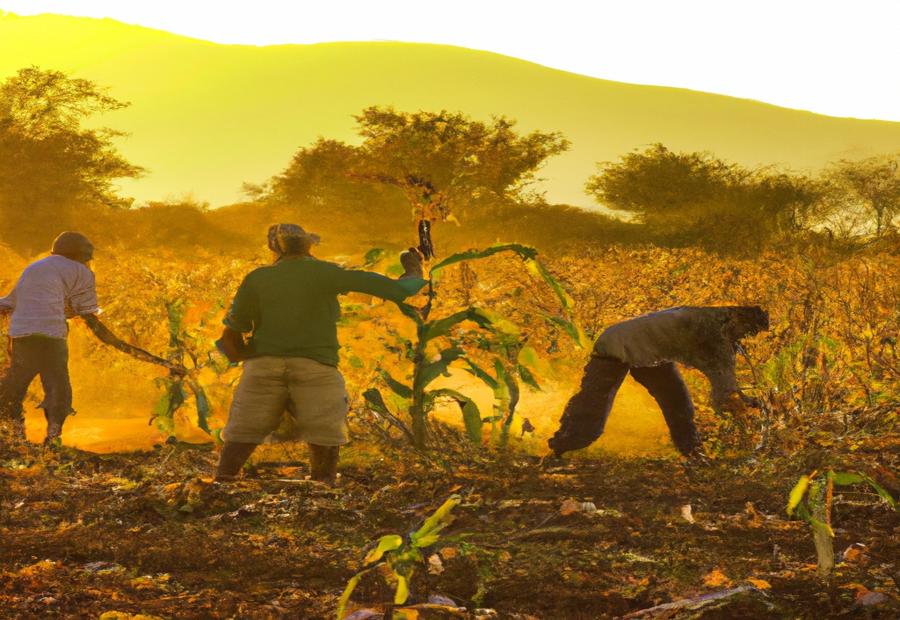
Photo Credits: Ktjkrug.Com by Gregory White
Dominican peasants have played a significant role in the country’s history. In this section, we will explore the historical perspectives surrounding Dominican peasants, shedding light on their struggles and contributions. We will delve into the impact of the Agrarian Reform Program, the intricate land tenure structure, and its effects on livelihoods. Additionally, we will examine the role of the Dominican sugar industry and its correlation with unemployment.
Impact of the Agrarian Reform Program
The Agrarian Reform Program had a major effect on the Dominican Republic. It was meant to tackle land possession issues and redistribute agricultural land among small farmers. This led to changes in ownership and improved the lives of many peasants.
The Program split large estates into smaller parts and gave them to peasant families. This had a beneficial outcome on their finances and wellbeing. Additionally, the Program provided help and technical support to these small farmers, aiding them to upgrade their farming practices and boost production.
Moreover, access to credit was increased for peasants, letting them invest in their farms and broaden their businesses. This helped form a more sustainable agricultural sector and decreased poverty levels in rural areas.
However, problems were linked to the implementation of the Agrarian Reform Program. Some major landowners resisted the redistribution of land and fought against government actions. Moreover, there were restrictions on resources and infrastructure, which stopped the Program from achieving its full potential.
To sum up, while the Agrarian Reform Program had a positive influence on Dominican peasants by increasing their access to land, credit, and technical support, it also experienced difficulties that hindered its success. To get a comprehensive understanding of the consequences of the Agrarian Reform Program on Dominican society, further research is needed. Reading books such as “Dominican Peasants” can give more insight into the historical context and dynamics surrounding this reform effort.
Land tenure structure and its effects on livelihoods
Land tenure structure in the Dominican Republic has had an effect on peasant livelihoods. The Agrarian Reform Program sought to redistribute land. This shift in ownership and control of land had both pros and cons for peasant farmers.
Previously, large estates were held by a few wealthy people. This left peasants with limited access and opportunities. Without secure land tenure, they couldn’t invest in their farms or plan for the future.
After the Reform Program, peasants got their own plots of land. This gave them more autonomy and control over their farms. It improved their livelihoods in some cases.
However, the redistribution didn’t always result in equitable outcomes. Some peasants got less fertile or inaccessible land, reducing their productivity. They may also have lacked access to resources like credit, markets, and technical assistance.
The shift in land tenure structure had an impact on peasant livelihoods in the Dominican Republic. But it’s still a problem today because it affects individual households and rural development strategies. The Dominican sugar industry is a prime example of how sweet dreams can turn into bitter employment prospects.
Examination of the Dominican sugar industry and its role in unemployment
Examining the Dominican sugar industry reveals its part in the problem of unemployment. For a long time, the Dominican Republic has relied on sugar production as a major income source. However, due to changes in global demand and tech advancements, the industry has faced difficulties. This has caused job opportunities in the field to decrease, leading to higher unemployment rates.
Furthermore, relying too much on the sugar industry has prevented economic diversification and stopped other sectors from growing, which could have taken up the workforce from sugarcane production and processing. This over-dependence on one sector has made the labor market unstable.
To solve this issue, it is necessary to promote diversification by giving support to the growth of other industries, such as tourism, manufacturing, and agriculture. Investing in these areas can create new employment and reduce reliance on one industry.
Also, providing vocational training and educational programs in line with these emerging industries can aid individuals to gain skills that are in high demand. Focusing on the development of a flexible workforce in various industries can reduce unemployment and promote economic stability.
Book recommendations and resources for further reading
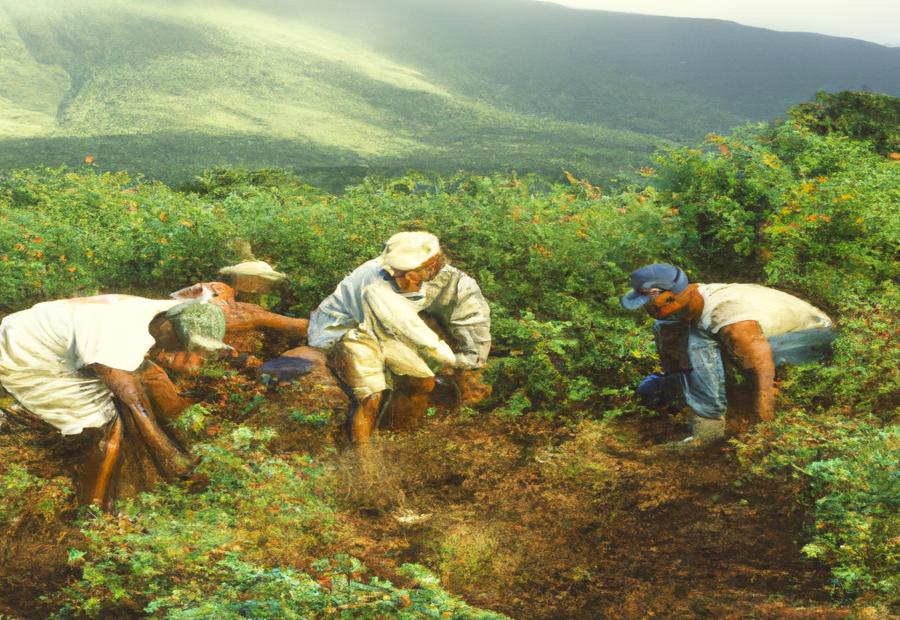
Photo Credits: Ktjkrug.Com by James Lee
This article provides valuable resources for readers wanting to know more about Dominican peasants. Here are some recommended books:
- “Dominican Peasants: A Comprehensive Study” by [Author]: This book looks into the lives and experiences of Dominican peasants. It covers their socio-economic conditions, cultural practices, and challenges they face.
- “The Role of Agriculture in the Dominican Republic” by [Author]: This book focuses on the agricultural sector in the Dominican Republic. It examines farming techniques, agricultural policies, and the effect of globalization on rural communities.
- “Cultural Heritage and Identity in Dominican Villages” by [Author]: This work looks at the cultural heritage and identity of Dominican villages. It delves into their unique traditions and customs.
These books offer insights into Dominican peasants, their contributions to society, and the issues they face. Readers can gain a deeper understanding of the subject by reading these books and other supplementary materials such as academic articles, research papers, and documentaries. Exploring a variety of resources will help readers build a comprehensive understanding of the topic. By utilizing these resources, readers will be better equipped to learn more about Dominican peasants and appreciate their experiences.
Some Facts About Dominican Peasants:
- ✅ The Dominican Republic experienced a significant shift in its demographic makeup in the late 1980s, with a majority of peasants leaving rural areas for better opportunities in urban areas. (Source: Team Research)
- ✅ Mobilization and organization efforts in the countryside led to increased political participation among peasants, who started voting regularly and in large numbers, supporting both liberal and conservative candidates. (Source: Team Research)
- ✅ Peasant cooperatives and associations emerged during this period, often affiliated with political parties, and played a role in supporting candidates and promoting their interests. (Source: Team Research)
- ✅ The distribution of land titles to peasants, particularly for lands previously owned by Trujillo, gained widespread support for Balaguer among the peasants. (Source: Team Research)
- ✅ Despite increased political activities, the peasants remained politically weak and had limited influence on national policy-making. (Source: Team Research)
FAQs about Dominican Peasants
Question 1: What were the changes that occurred in the Dominican countryside in the late 1980s?
Answer: In the late 1980s, significant changes took place in the Dominican countryside. Peasants left rural areas for better opportunities in urban areas, leading to a shift from predominantly rural to predominantly urban. Mobilization and organization also began, with peasants participating in elections and supporting both liberal and conservative candidates. Peasant cooperatives and associations emerged, affiliated with political parties. However, despite these changes, the peasants remained politically weak and had limited influence on national policy-making.
Question 2: What resources were used to reduce the isolation of rural life in the Dominican Republic?
Answer: The introduction of modern communications, such as radio and television, and the development of farm-to-market roads helped to reduce the isolation of rural life in the Dominican Republic. These resources allowed for better connectivity and access to information in rural areas.
Question 3: What is Caribbean Studies, and what does it focus on?
Answer: Caribbean Studies is a peer-reviewed journal published by the Institute of Caribbean Studies at the University of Puerto Rico, Río Piedras Campus. It focuses on the Social Sciences and the Humanities in relation to the Caribbean. The journal accepts submissions in English, Spanish, and French and features original works, book reviews, and other content related to ongoing research in the field of Caribbean Studies.
Question 4: What is the book “Peasants In Distress: Poverty And Unemployment In The Dominican Republic” about?
Answer: The book “Peasants In Distress: Poverty And Unemployment In The Dominican Republic” by Rosemary Vargas-lundius provides a comprehensive analysis of the poverty and unemployment issues faced by Dominican peasants. It discusses the economic structures, labor markets, and socio-economic challenges that perpetuate these issues. The book also explores the impact of the Agrarian Reform Program, land tenure structure, rural-urban migration, and the demand for immigrant Haitian labor in the Dominican Republic.
Question 5: What is the book “Foundations of Despotism: Peasants, the Trujillo Regime, and Modernity in Dominican History” about?
Answer: The book “Foundations of Despotism: Peasants, the Trujillo Regime, and Modernity in Dominican History” by Richard Lee Turits examines the history of the Dominican Republic and the rule of Rafael Trujillo. It explores the social foundations of the Trujillo regime and challenges the simplistic demonization of dictatorial regimes. The book analyzes the dynamics of power, especially in relation to agrarian policies and the support of peasants and elite sectors. It provides a comprehensive understanding of the Trujillo regime and its impact on Dominican society.
Question 6: Where can I purchase the book “Peasants and Tobacco in the Dominican Republic, 1870-1930” by Baud Michiel?
Answer: The book “Peasants and Tobacco in the Dominican Republic, 1870-1930” by Baud Michiel is available for purchase on different platforms such as Amazon, AbeBooks, and Lavoisier. You can check these websites to find the book and make a purchase.

